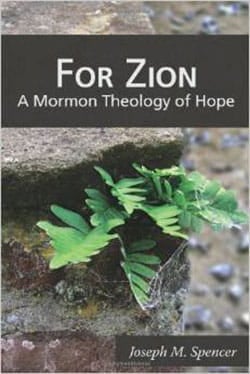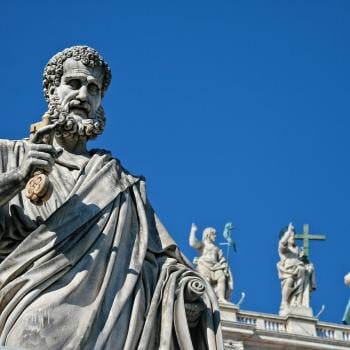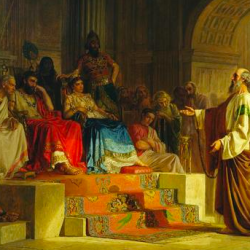 Joseph M. Spencer's most recent book (unless he has done another in the few weeks since this one was published) is For Zion: A Mormon Theology of Hope (Kofford Books, 2015; 157 pages, with index).
Joseph M. Spencer's most recent book (unless he has done another in the few weeks since this one was published) is For Zion: A Mormon Theology of Hope (Kofford Books, 2015; 157 pages, with index).
I go back a long way with Joe, back to when he was still a recently-returned Mormon missionary and still an undergraduate at Brigham Young University. Not yet married, I think. I remember him partly because the Hegel class he was in was so small, two people enrolled with a third visitor each week from a nearby university. But I remember Joe mostly because of the incredibly imaginative and interesting readings he gave of Hegel.
Seeing him walking across campus, always with his nose in a book, also made me remember him. And it made me wonder how he ever got married, much less had children. But Joe has the ability to study and read and write and have a family, and to keep all of those things going at once.
Needless to say, Joe is very bright, and that brightness shines through in this book.
The title may be misleading to prospective readers, though it is quite appropriate. For the book is not about hope in the abstract, but about the hope of the law of consecration, the hope that the poor can be lifted up.
In the early days of the LDS Church, the Saints explored various stratagems of economic communion with the aim of achieving a state in which there would be no poor among us, as Latter-day scripture teaches was true of the City of Enoch (Moses 7:18). Joe's book turns our attention to those stratagems and to the revelations that accompanied them to ask what the law of consecration means for us.
Chapter ten of Joe's book, "Zion in Transition," deals with the history of the development of the Latter-day Saint notion of Zion and of the law of consecration. Chapter eleven, "Zion Revised," addresses the revisions that Joseph Smith made to his revelations as his understanding of that law developed.
Chapter ten shows Smith coping with consecration in the midst of changing circumstances. In particular, he was responding to the reluctance of the members of the Church to be as excited about the law of consecration as some of the Church's leaders were. He was also responding to the fact that Saints were settling Missouri from Ohio less judiciously than he had instructed them to. And he was coping with the difficulty, in fact the impossibility, of finding a legal way of consecrating property, giving people the use of property without giving them ownership.
Chapter eleven discusses the revisions that Smith consciously and publicly made to his revelations as he dealt with the difficulties of understanding how to make consecration work. Those revisions show us growth in the understanding of consecration. In fact, I think they are exemplary for helping us understand how prophetic revelation works: seldom as God's-lips-to-the-prophet's-ear so much as God's inspiration to a prophet who must then figure out in practical terms what that means, sometimes making mistakes along the way, necessarily taking into account new circumstances whether or not mistakes were made.
Joe begins by comparing the story of the sheep and the goats at the Day of Judgment (Matt. 25:31-46) and the law of consecration. I find that story very unsettling. It makes me tremble, wondering whether I may think I am a sheep when I am really one of the goats of this story, one of those who mistakenly think they are righteous.
Joe doesn't solve my personal worry, but I like his comparison. He tells us that in Matthew, Jesus teaches that "good deeds consciously rendered to other human beings are actually good deeds unconsciously rendered to God." And in the law of consecration "good deeds consciously rendered to other human beings need to be good deeds consciously rendered to God" (124). (Too many italics. But that just proves that Joe isn't perfect.) This means that in the law of consecration "every 'unto them' is to be also an 'unto me,'" the Lord (125).
The point is that in the law of consecration use and ownership don't collapse into one another, even when they coincide.
Joe argues that the wedge that keeps the two concepts apart, even when things used and the things owned are identical, is accountability. The steward is accountable for how she uses her property, how she organizes that over which she has charge—even as an owner—around "the exaltation of the poor, the public benefit of the Church, and the full redemption of Israel" (128).





